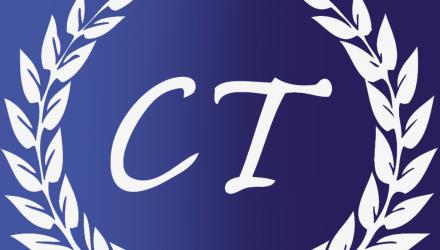In the third article in a series on the HCPC re-registration process, CSP adviser Gwyn Owen looks at the importance of linking CPD outcomes to professional practice

As CSP members, we all have a responsibility to engage in continuing professional development (CPD).
It is this process of lifelong learning that enables us to maintain and develop awareness and evidence of who we are – as a person, and as a professional.
While the responsibility to engage with CPD is not new, it has become increasingly important in the current social, political and economic climate, where the expectations placed on and organisation of physiotherapy practice are constantly changing.
Both the CSP and the Health and Care Professions Council (HCPC) adopt an outcomes-based approach to CPD. As the phrase suggests, this requires us to look beyond the learning input or event, to look at the change that learning achieves.
What that means in practice is that potentially any learning opportunity (formal and informal) – whether it is happening in the workplace environment or outside it – has CPD potential.
What’s key is that we are able to show how the outcomes generated by the CPD opportunity relate to our practice.
This is the connection that HCPC standards for CPD expect registrants to be able to demonstrate.
As you will have seen from members’ accounts of participating in the HCPC’s CPD audit of 2012 (‘Professionalism in practice’, page 29, 1 January 2014), the process of making that link isn’t always straightforward. Much of our learning as a physiotherapy workforce happens in practice – through doing.
So while we might realise that our practice has changed over time, it isn’t always immediately obvious how and where that learning took place ... until we take a pause from our practice to recognise that connection and to collect evidence to share the connection with others.
This is what this article is designed to do.
This article is designed to offer some guidance and a suggested structure to help you recognise and record the connection between the outcomes of CPD and your practice.
Working through this process is useful whether or not you are one of the 2.5 per cent of physiotherapy registrants selected to participate in next month’s HCPC CPD audit.
But even if you’re not selected, the process of connecting learning to practice, or practice to learning, is a valuable CPD process in its own right.
It will help you recognise and show the value of specific learning activities, and the quality of your practice.
Building a record of the links between the two could be used to demonstrate your contribution to the service at annual appraisal, support an application for study leave, project funding or new post, or make the case for regrading or ongoing access to CPD within the department.
Where to start?
If you’re looking for a structure to make the process of connecting the outcomes of your learning to your practice, the HCPC standards for CPD might help.
The HCPC’s CPD Standards 3 and 4 provide direction and focus which should make the task easier to contain and manage.
The HCPC’s CPD Standard 3 expects registrants to ensure that their CPD has contributed to the quality of their practice and service delivery.
Standard 4 expects registrants to seek to ensure that their CPD benefits the service user (www.hcpc-uk.org/cpd ).
This relationship is shown in figure 1.
Having got a structure to start making the connections, the next stage in the process is to pull together information and evidence you have been collecting – about your CPD activity, and about your practice.
If you’ve got all that information stored in a single space – great. Chances are, it will be sitting in a couple of places – in a drawer or folder maybe, on a memory stick or departmental intranet, or in an ePortfolio or digital dropbox.
The process of bringing everything into one place can be a positive experience in itself (see ‘Professionalism in practice’, page 29, 1 January 2014)) – being able to see and celebrate change in your practice.
Once you have the information to hand, the next stage is about connecting learning outcomes to your practice. And the process can start from either end.
You could start with your list of CPD activities and outcomes and work forward.
That would involve tracing how the outcomes from a learning activity produces specific outcomes in practice.
Or you could start from the information you have pulled together about your practice and service delivery, and how your work benefits service users.
That involves analysing the values, behaviours, knowledge and skills required to produce the practice and attaching the practice to your list of CPD activities and outcomes.
Whichever point you choose to start from, the process will help you compile and develop evidence of what your practice is like (a profile), a list of CPD activity and outcomes, and a portfolio of evidence that shows how your learning supports the development of your practice (see example in text box 1).
As you’ll have seen from HCPC website, it is this information that you will need if you were chosen to participate in the HCPC’s CPD audit.
The list of CPD activity will help you show how you are meeting CPD standards 1 and 2; while the evidence of how the outcomes of your learning connect to your practice will show how you meet CPD standards 3 and 4. fl
Linking the outcomes from a learning activity to practice (AN example)
- Date:June 2013
- Activity:Designed and delivered in-service training around portfolio development using resources downloaded from CSP ePortfolio.
- Outcome 1: increased awareness of resources available in CSP ePortfolio.
- Link to practice:able to signpost peers to material on CSP website.
- Outcome 2: Updated personal knowledge about portfolio development
- Link to practice: felt confident to support mentee develop a portfolio to support their successful application for a new job. (Mentee feedback stored in my ePortfolio).
- Outcome 3:how to design an interactive workshop (copy of workshop design/content and participant feedback stored in my black folder)
- Link to practice:due to facilitate a series of workshops on portfolio development with a peer (for action: December 2013/February 2014)
- Outcome 4:confidence in facilitating a staff workshop.
- Date:July 2013
- Activity: Peer reflection with colleague about managing an aggressive patient
- Outcome:Highlighted gap in my knowledge of trust policy and procedures
Author
Gwyn OwenNumber of subscribers: 1




































